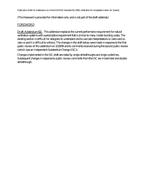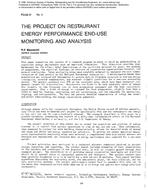Provides the fundamentals of and a design algorithm for radiant panel cooling systems with special emphasis given to solar energy utilisation and to demonstrate its feasibility with a case design. A steady-state heat transfer model was developed to determine the heat diffusion in a cooled ceiling slab and to predict its interactive performance in the conditioned space. More suitable tie-in features of the radiant ceiling cooling system with absorption-type heat pumps and solar collectors were identified and explained in terms of the first and second laws of thermodynamics. This analysis indicated an increase in both heating and cooling coefficients of performance (COP) of the absorption heat pump and a substantial decrease in the total energy loss in addition to an increase in the flat-plate solar collector efficiency. The case design involves an experimental solar house with 81 m2 net living area. Sensible cooling and heating are designed to be accomplished by radiant ceiling and floor panels, respectively. For cooling purposes, a 3.5-kW water-ammonia absorption heat pump and flat-plate collectors with 30 m2 total absorber area are required. The same system will also provide domestic hot water. The design analysis indicated that with radiant ceiling cooling, the peak cooling load will be shaved by about 25%.
KEYWORDS: radiant cooling, designing, ceiling cooling, algorithms, solar energy, radiant panels, models, heat flow, solar collectors, computer programs, absorption heat pumps, case studies, calculating, feasibility, heat pumps, coefficient of performance, energy, flat plate solar collectors, housing, cooling load, peak load.
Citation: Symposium, ASHRAE Trans., 1993, vol.99, part 2, paper number DE-93-1-1, 429-439, 7 figs, 2 tabs, refs.
Product Details
- Published:
- 1993
- File Size:
- 1 file , 1.4 MB
- Product Code(s):
- D-17453


